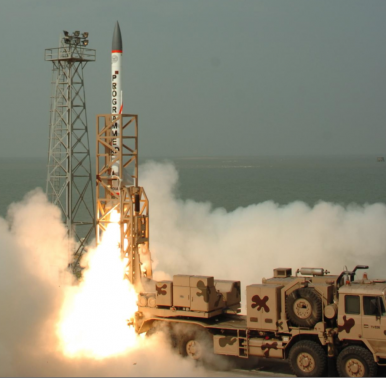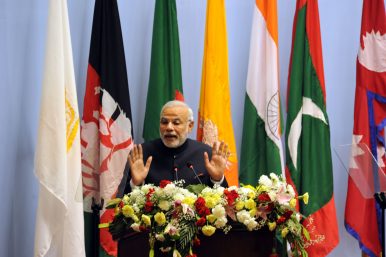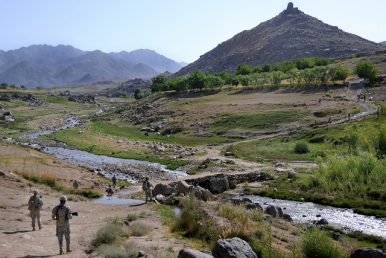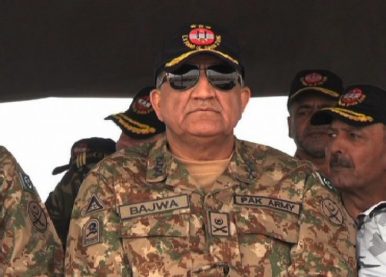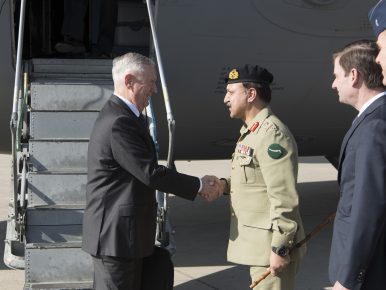A Breakdown of US Aid to Pakistan
-- Maj Gen P K Mallick,VSM (Retd)
“The United States has foolishly given Pakistan more than 33 billion dollars in aid over the last 15 years,” President Trump provocatively tweeted yesterday, adding falsely that “they have given us nothing but lies & deceit.”
A breakdown of US aid to Pakistan (excluding covert assistance) is given below.
Direct Overt U.S. Aid Appropriations for and Military Reimbursements to Pakistan, FY2002-FY2018
Prepared by the Congressional Research Service for distribution to multiple congressional offices, November 28, 2017
Note: Final obligation and disbursement totals often are lower than program account appropriations (rounded to the nearest millions of dollars)
Sources: U.S. Departments of State, Defense, and Agriculture; U.S. Agency for International Development
Abbreviations:
CN: Counternarcotics Funds (Pentagon budget)
CSF: Coalition Support Funds (Pentagon budget)
CSH: Child Survival and Health; Global Health and Child Survival (GHCS) from FY2010; Global Health Programs (GHP) from FY2013
ESF: Economic Support Funds
FMF: Foreign Military Financing
IDA: International Disaster Assistance (Pakistani earthquake, flood, and internally displaced persons relief)
IMET: International Military Education and Training
INCLE: International Narcotics Control and Law Enforcement (includes border security)
MRA: Migration and Refugee Assistance (also includes Emergency Refugee and Migration Assistance or ERMA)
NADR: Nonproliferation, Anti-Terrorism, Demining, and Related (the great majority allocated for Pakistan is anti-terrorism assistance)
PCF/PCCF: Pakistan Counterinsurgency Fund/Counterinsurgency Capability Fund (PCF overseen by the Pentagon, PCCF overseen by State)
Notes:
a. This funding is “requirements-based;” there are no pre-allocation data.
b. Includes $312 million “global train and equip” funds from FY2006-FY2009 as authorized by Section 1206 of the National Defense Authorization Act (NDAA) for FY2006, within which $100 million in FY2008 and FY2009 funds went to train and equip Pakistan’s paramilitary Frontier Corps.
c. Congress authorized Pakistan to use the FY2003 and FY2004 ESF allocations to cancel a total of $1.5 billion in debt to the U.S. government. Also includes $17 million in Human Rights and Democracy Funds from FY2002-FY2007.
d. P.L.480 Title I (loans), P.L.480 Title II (grants), and Section 416(b) of the Agricultural Act of 1949, as amended (surplus agricultural commodity donations). Food aid totals do not include freight costs.
e. Includes $286 million in Development Assistance appropriated from FY2002-FY2008.
f. CSF is Defense Department funding to reimburse Pakistan for logistical and operational support of U.S-led military operations; it is technically not foreign assistance. Figures in the CSF row reflect actual payments by appropriation year and not appropriations themselves.
g. The FY2013 NDAA disallowed reimbursements to Pakistan for the period of FY2012 during which the U.S. military’s ground and air lines of communication across and over Pakistan to Afghanistan were closed by the Pakistani government (November 2011-July 2012).
h. The FY2015 NDAA authorized up to $1 billion in additional CSF to Pakistan, $300 million of which was subject to Haqqani Network-related certification requirements that cannot be waived by the Administration. The FY2016 NDAA authorizes another $900 million, with $350 million ineligible for waiver. The FY2017 NDAA authorizes a further $900 million, with $400 million ineligible for waiver. The FY2018 NDAA authorizes another $700 million, with $350 million ineligible for waiver. The Administration did not issue certifications for FY2015 or FY2016. A decision on FY2017 certification is pending.


